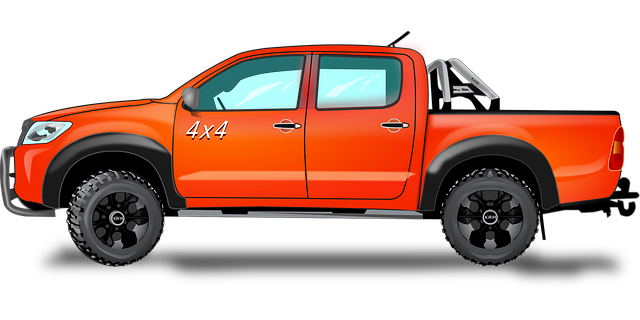4WD off-road enthusiasts must conduct a thorough pre-trip vehicle inspection to ensure safety and reliability on tough terrains. This includes verifying all lighting systems, checking engine compartment fluids—brake, transmission, coolant, and power steering—to their appropriate levels, inspecting tires for proper inflation and condition, assessing the suspension system for wear or damage, and ensuring that electrical components like batteries and charging systems are functioning correctly. Mastering 4WD off-road driving techniques is crucial; it involves understanding your vehicle's limits and adjusting tire pressure to suit different terrains, maintaining the exhaust system for peak engine performance, and regularly monitoring fluid levels post-excursion. By adhering to a systematic inspection process and implementing a tailored maintenance routine, 4WD off-roaders can enhance their experience, reduce mechanical risks, and enjoy a safe and successful journey off the beaten path.
Embark on a journey through the rough terrains with confidence by mastering 4WD off-road techniques and ensuring your vehicle is up to the task. This article serves as your definitive guide for a thorough pre-trip inspection, diagnostic tips to pinpoint potential issues, and maintenance practices that sustain your 4×4’s reliability and performance. Whether you’re an experienced off-roader or new to the adventure, these insights will enhance your capabilities and safety on all types of terrain.
- Comprehensive Guide to Pre-Trip Inspection for Enthusiasts of 4WD Off Roading Techniques
- Diagnostic Tips and Tricks for Identifying Issues in Your Off-Road Vehicle
- Essential Maintenance Practices for Sustaining Reliability and Performance in 4×4 Off Roading Ventures
Comprehensive Guide to Pre-Trip Inspection for Enthusiasts of 4WD Off Roading Techniques

4WD off-roading enthusiasts understand the critical nature of conducting a thorough pre-trip inspection to ensure vehicle reliability and safety on rugged terrains. This comprehensive guide is designed to help you master the essential checks that are imperative for a successful off-road excursion. Begin by scrutinizing the vehicle’s lights and signaling systems, ensuring they function optimally. Headlights, taillights, hazard lights, and turn indicators must all be in proper working order as they are vital for both visibility and communication with other drivers. Attention then turns to the engine compartment, where you should verify fluid levels, including brake, transmission, coolant, and power steering fluids. These components are pivotal to the vehicle’s performance and longevity on demanding off-road conditions.
Suspension systems and tire condition are also paramount to address during your pre-trip inspection. Examine each tire for proper inflation, tread depth, and any potential damage that could compromise grip. Tires should be inflated to the manufacturer’s recommended pressure specific for off-road conditions to ensure optimal traction on varied surfaces. The suspension system itself should be inspected for signs of wear or damage that could affect stability and handling over obstacles and through uneven terrain. A well-maintained 4WD vehicle with all systems checked and functioning will not only enhance your experience mastering 4WD off-roading techniques but also significantly reduce the risk of mechanical failure during your adventure.
Diagnostic Tips and Tricks for Identifying Issues in Your Off-Road Vehicle

When it comes to off-road vehicle inspection and diagnosis, a keen eye and a systematic approach are paramount. Before embarking on an off-road adventure, it’s crucial to conduct a thorough check of your 4WD vehicle to ensure its readiness for the challenging terrain ahead. One of the first aspects to examine is the tire condition; tread depth and tire pressure should be at optimal levels for the best traction and handling on various terrains. The suspension system also demands attention, as it directly affects stability and articulation over uneven ground. Check for any signs of wear or damage that could compromise its performance.
Mastering 4WD off-roading techniques is not solely about driving proficiency but also understanding the mechanical aspects of your vehicle. An often overlooked yet critical component is the differentials, which distribute power to wheels that have more grip. A differential that’s not functioning correctly can lead to power loss and increased wear on tires. Regular inspection and proper maintenance of these components can prevent issues from arising during off-road excursions. Additionally, familiarize yourself with the vehicle’s electrical systems, as a faulty battery or charging system can leave you stranded. Learn to diagnose issues by checking voltage levels and ensuring all connections are secure. By integrating these diagnostic tips and tricks into your routine checks, you’ll enhance your off-road vehicle’s reliability and safety, allowing you to confidently tackle the most demanding off-road conditions.
Essential Maintenance Practices for Sustaining Reliability and Performance in 4×4 Off Roading Ventures

4×4 off-road vehicles are subjected to harsh conditions that can test their durability and performance. To sustain reliability and optimize performance in off-road ventures, it is crucial to implement a routine maintenance schedule tailored specifically for these vehicles. This schedule should prioritize the inspection and servicing of critical components such as the drivetrain, suspension, tires, and electrical systems. Regular examination of the transfer case, differentials, and drive shafts can prevent costly repairs by identifying potential failures before they occur. Ensuring that all fasteners are securely tightened, especially after off-road use, is a simple yet effective practice to avoid component dislodgment or failure.
Mastering 4WD off-road techniques is not just about the driver’s skill but also about understanding the vehicle’s capabilities and limitations. Adequate tire pressure adjustments are essential for different terrains, as it affects traction and stability. Similarly, the vehicle’s exhaust system should be checked regularly to ensure optimal airflow and engine performance. Fluid levels, including transmission, brake, coolant, and differential fluids, must be monitored and changed according to the manufacturer’s recommendations. Additionally, the battery and alternator should be inspected to guarantee uninterrupted power supply, which is vital for lighting and electrical systems during challenging off-road conditions. By combining these maintenance practices with advanced off-road driving techniques, 4×4 enthusiasts can navigate diverse terrains confidently and reliably.
4×4 off-road enthusiasts can master their vehicle’s capabilities and navigate challenging terrains confidently by adhering to a meticulous pre-trip inspection, employing diagnostic tips for issue identification, and maintaining essential practices for longevity and performance. By integrating the guidance from this article into your routine, you’ll enhance both your off-road vehicle’s reliability and your own skill in managing 4WD off-roading techniques effectively. Remember to consistently check components such as tires, suspension, and drivetrain for optimal function, ensuring a safer and more enjoyable off-road adventure. With these strategies under your belt, you’re well-equipped to conquer the elements and make the most of your off-road journey.
